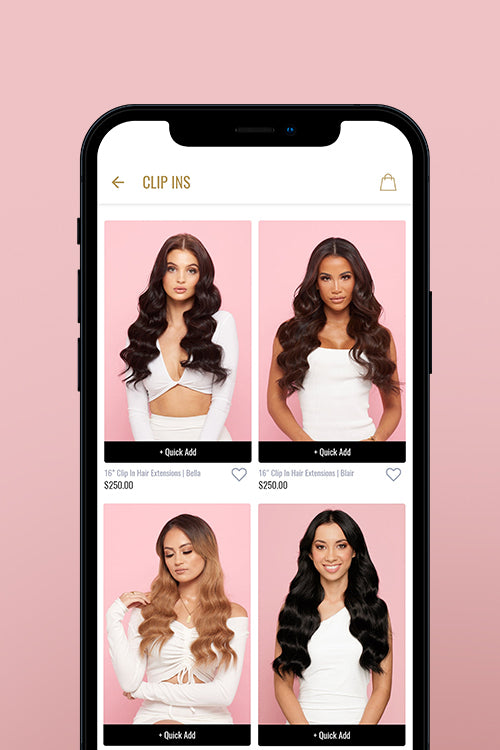What Does Hair Porosity Mean?
Is There More Than One Type Of Hair Porosity?
Yes, there are three types of hair porosity and they are low, normal and high porosity.
Low porosity hair means that your hair cuticle lays flat on the outside blocking water or any moisture from being absorbed into the strands. You can determine easily if you have low porosity hair by knowing how long it takes for your hair to dry or you notice that products begin to build up into the hair instead of blending in as they should. If your hair is low in porosity, it doesn't necessarily mean your hair is unhealthy it just means it isn't retaining moisture correctly.
Normal porosity hair means your cuticles are looser which allows moisture to penetrate the strands much easier. Ideally, this is the level you would want to have.
High porosity hair means that there may be damage around your hair cuticle which can be caused by chemical hair treatments or too much heat styling + other factors. High porosity hair always means your hair can easily and quickly soak up product meaning you will find yourself needing to use and apply more product to see any results. Regardless if you have high porosity hair and absorb product quickly, it doesn't necessarily mean that your hair is hydrated and being correctly nourished.
How Do You Take A Hair Porosity Test?
Learning what type of hair porosity you are will help you in knowing what products you should be using and the hair care routine that should follow to have the healthiest hair you can have and ensure your hair is getting the right amount of moisture. Knowing your hair porosity is certainly important for all hair types, curly hair girls really should know their hair porosity type as curly hair tends to dry out a lot easier than other hair types. Curly hair has the natural tendency to develop dryness or begin dry and that's because the natural oils your scalp produces (sebum) doesn't travel down your hair strands as well as straight hair does.
Learning your hair porosity through the porosity test is easy and incredibly simple, not to mention it can be done from home! All you'll need is a clear glass of water and a few strands of your hair - we recommend performing this test when your hair is dry and free of any product. Now don't go pulling out your hair, simply brush your hair (make sure it's clean) and take the strands that have shed and put them in your clear glass of water. If your hair strands sink straight to the bottom, this means you have high porosity hair and is absorbing all the moisture. If your hair strands remain under the surface but are floating above the bottom of the glass, this means your have normal porosity hair and your hair is well-balanced. And lastly, if your hair strands are floating above the surface of the water this means you have low porosity hair and it does not absorb moisture easily.
How Do You Care For Normal Porosity Hair?
Normal porosity hair require less to no maintenance, you're one of the lucky ones however there are steps even you can take to ensure your hair stays around the "normal" range. Deep conditioning and detoxifying hair masks once a week or once every fortnight depending on your hair type will only enhance your hairs health and maintain it's ability to absorb and retain moisture along with preventing any product build-up.
For those with high porosity hair, it's imperative you avoid using products that contain sulphates, parabens, nasty silicones and sodium laureth sulphates. There sorts of ingredients can strip natural oils from your hair which is naturally made to give your hair strength and continue to grow. Highly porous hair will have common experiences with dryness, hair that breaks easily and shedding. This is because the cuticle around the hair strand is damaged so while any moisture may penetrate the hair strand, it wont actually retain the moisture which results in your hair strands drying out. Not to mention, if you have highly porous hair, it's pretty important that you avoid heat styling and any treatments that are high in chemical use that will only continue to dry out your hair. To aid high porosity hair, steer towards using hair masks, oils and hair products that will pump your hair full of moisture and help repair the damage done to your cuticles.
General Hair Care Tips For All Hair Porosities
Without singling out hair types or hair porosities, there are tips and universal rules all hair types should follow. It's important to note that the weather and environment you're in can also make an impact on your hair. Exposure to UV rays from the sun can easily dry out your hair & scalp which can impact your hairs porosity and the same goes for dry, cold weather. Don't be surprised if you need to change your hair care routine as each season rolls in to ensure and maintain your hairs moisture year-round.
- Minimise heat styling wherever possible and ALWAYS use heat protectant before using any heated tool.
- Limit chemical treatments like colouring whenever possible.
- Use a hair oil as a leave-in treatment before you shampoo your hair.
- Use a non-sulfate shampoo's as well as any parabens or nasty silicones.
- Use a deep conditioner that contains protein and moisturizing ingredients.
How Can Hair Extensions Help With Hair Porosity?
Regardless of your hair type or level of porosity, hair extensions are damage & chemical free way to experiment with not only colour but with different textures, styles and lengths. If you're someone that likes to have a balayage affect, Hey Stacey has a range of ombre colours to help achieve this look without actually damaging your natural hair through chemical treatments. Hair extensions can also be styled before you apply then which will not only save your natural hair from heated styling but also makes getting ready much quicker and easier. The best part apart hair extensions is the freedom to experiment with your hair without causing any damage!
Overall, hair porosity is just one category that will you help you in determining your hair type but also what your hair needs to be healthy and strong. Elasticity, texture and density all play an important role in understanding your hairs needs. Remember to do a hair porosity test and "check in" with your hair dresser every once in a while to learn what more you could be doing to keep your hair healthy and strong - they can recommend products as well! Knowing your hair type means less money and time wasted - win!










Leave a comment